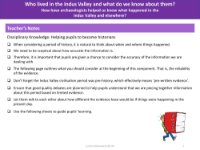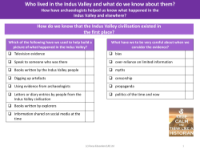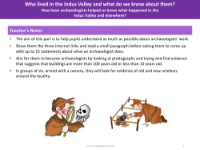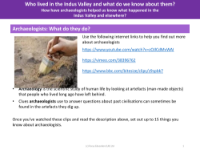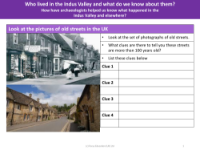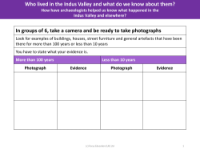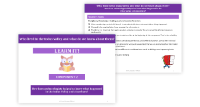How have archeologists helped us know what happened in the Indus Valley and elsewhere? - Presentation
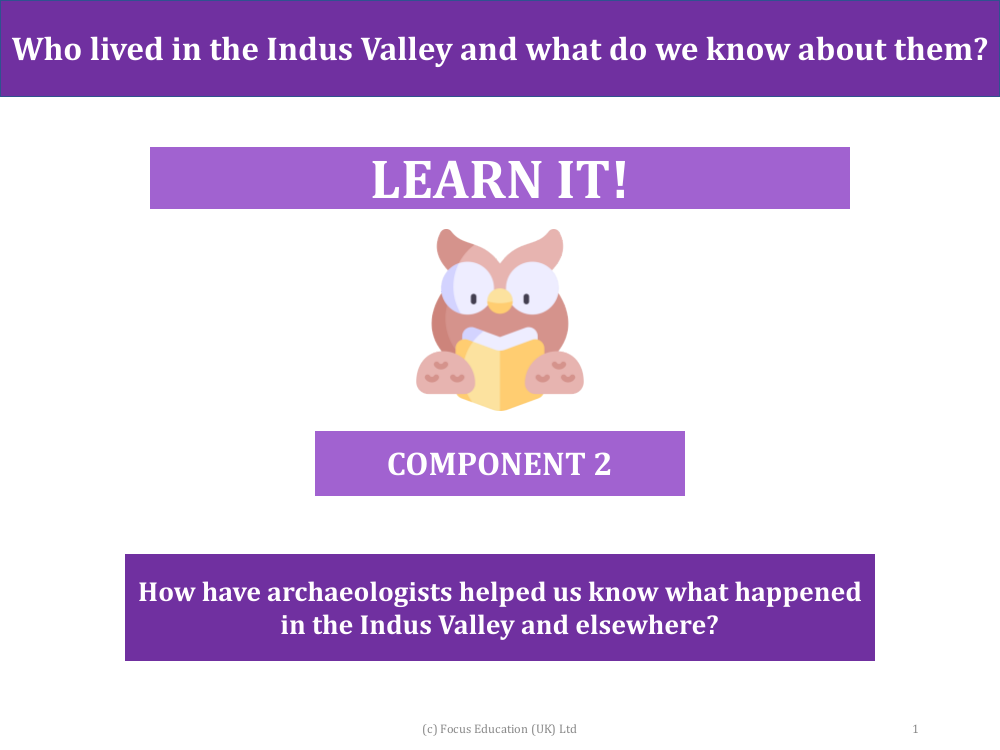
History Resource Description
Archaeologists have played a crucial role in uncovering the history of the Indus Valley civilisation, which existed over 3000 years ago during a time known as pre-history, meaning there were no written records from the period. By excavating artefacts and using scientific methods, archaeologists have pieced together a picture of the past, providing insights into the lives of the people who inhabited the Indus Valley. However, the reliability of the evidence uncovered is subject to scrutiny, as it's important to consider factors such as bias, over-reliance on limited information, and the political context of both the past and present. The Focus Education presentation emphasises the need for pupils to engage in quality debates about the accuracy of historical information and to understand the challenges associated with studying a civilisation that left behind no written evidence.
The presentation encourages pupils to explore the work of archaeologists in detail, using various resources to learn about the scientific study of human life through artefacts. Pupils are tasked with identifying up to 15 things they know about archaeologists, such as the clues used to answer questions about past civilisations. They are also given practical activities, including examining photographs of old and new streets to identify clues indicating their age, and taking their own photographs to find evidence of the age of buildings, street furniture, and artefacts in their locality. These hands-on experiences are designed to help pupils think like archaeologists and understand the meticulous process of gathering and analysing evidence to learn about historical periods such as the Indus Valley civilisation.
